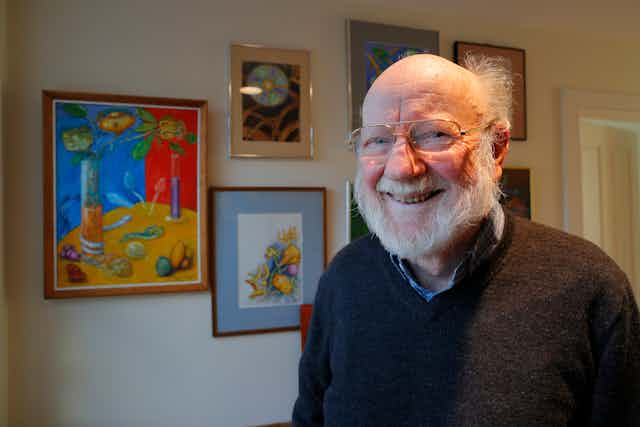Back in 2012, I had the great pleasure of meeting with William (Bill) Campbell at Trinity College. We were among a group of five receiving honorary doctorates from the University of Dublin. The presentation – by Trinity Chancellor Mary Robinson, the former Irish president and United Nations Human Rights Commissioner – and the dinner afterwards, were altogether memorable occasions.
Now, at 85 Bill has been recognised, along with Satoshi Omura and Youyou Tu by the 2015 Nobel Prize for Physiology or Medicine, for his discoveries leading to treatments for major parasitic diseases.
What I recall most clearly from that evening in 2012 was Bill’s story of his involvement in the discovery and development of Ivermectin. At the time he was as a senior scientist with the Merck drug company.
River blindness, a horrible disease that was prevalent in the developing world, is caused by the worm Onchocerca volvulus. When Merk realised it could be treated or prevented with Ivermectin, he and then-Merck President Roy Vagelos arranged for the company to provide the drug free to all who need it, for as long as it’s needed.
Big Pharma often gets a bad press, and it’s sometimes justified, but here Merck has been on the side of the angels.
Growing up in County Donegal, Bill Campbell graduated from Trinity in 1952 with a degree in zoology then went on to take a PhD at the University Wisconsin in 1957.
Apart from some Irish connection, what Bill and I share is a passion for pathogens – or, rather, for doing something about them. My end of the size spectrum is the tiny viruses while Bill’s fascination is with the biggest of our unwelcome invaders, the worms.
My early training in veterinary science at the University of Queensland had a big parasitology component and, as a consequence of being on the Board of a veterinary parasitology research institute in Nairobi (ILRAD, now ILRI), I’d kept somewhat in touch with the world of worms.
So when I met Bill, I’d long been familiar with Ivermectin as a very successful drug for treating internal and external (mites) parasites of domestic animals and, in particular, for clearing heartworm (Dirofilaria immitis) from dogs. I also knew that what we had all thought of as a veterinary drug had found a major role in treating human river blindness.
At 82, Bill was in fine form when he gave this lecture the day before the 2012 Trinity award. But if you do watch it, prepare to be little grossed out. Most of us are not comfortable with the idea of little worms migrating through our skin, causing premature ageing, and forming big nodules in the groin or eye.
He also describes incising one of these things as cutting into a walnut filled with angel hair pasta, with the “pasta” being the Oncocerca volvulus worm, the cause of river blindness.
Then there’s the equally horrible condition Elephantiasis, caused by the filarial parasite Wucheraria bancroftii, a worm that was first described (in 1876) by Brisbane physician Joseph Bancroft.
In his lecture, Bill describes how, working at the Merck drug company, his Japanese colleague Omura sent him bacterial (Streptomyces) cultures to be screened for their anti-parasitic effects. This led to the discovery of Avermectin, which the chemists modified a little and synthesised to make the drug Ivermectin.
Now, giving just three inexpensive pills a year prevents people from developing river blindness, with as many as 60 million people treated in any given year.
Apart from the individuals concerned, this Nobel prize recognises the initiative to deal with the great neglected diseases of mankind. This challenge has been taken up over the decades by government aid donors and by major philanthropies such as the Bill and Melinda Gates Foundation. Gates played a big role in bringing Youyou Tu’s discovery and development of the anti-malarial drug Artemesinin to the fore.

